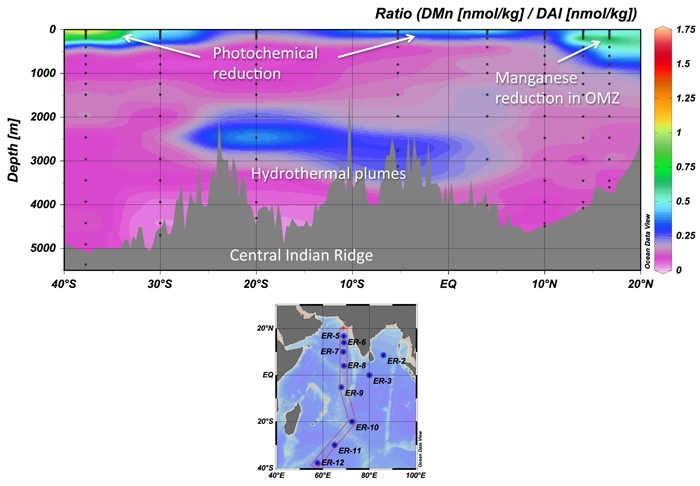Substantial intra-basin variation of the dissolved metal/phosphorus ratio in the different water masses of the Indian Ocean
The first simultaneous, full-depth, and basin-scale section-distribution of dissolved (D) aluminum (Al), manganese (Mn), iron (Fe), cobalt (Co), nickel (Ni), copper (Cu), zinc (Zn), cadmium (Cd), and lead (Pb) is reported in the Indian Ocean. In addition to widespread co-limitation for phytoplankton production by dissolved iron (DFe) and occurrence of redox-related processes, the authors observe an important variability of the dissolved metal/phosphorus ratio among the water masses within the Indian ocean (up to a factor of 300 between Arabian Surface waters and Lower Circumpolar Deep Water). The Cu/P, Zn/P, and Cd/P ratios are within the same order of magnitude for both phytoplankton and deep water, whereas the Mn/P, Fe/P, and Co/P ratios of phytoplankton can increase 100-fold or more compared to those in deep water. Such results are questioning the validity of using an “extended Redfield ratio” to trace metals. The consistent mechanism yielding these variations remains to be understood...
Figure: Meridional section distribution (~70°E) of the DMn/DAl ratio.
Reference:
Thi Dieu Vu, H., Sohrin, Y. (2013) Diverse stoichiometry of dissolved trace metals in the Indian Ocean, Scientific Reports 3, DOI: 10.1038/srep01745

